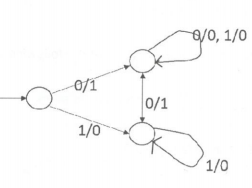Regular languages and finite automata
Question 131
Question 132
Minimal deterministic finite automaton for the language L = {0n | n ≥ 0, n ≠ 4} will have:
Question 133
The regular expression corresponding to the language L where
L = { x ϵ {0, 1}*|x ends with 1 and does not contain substring 00 } is:
Question 134
The transition function for the language L = {w|na (w) and nb(w) are both odd} is given by:
δ (q0, a) = q1 ; δ (q0, b) = q2
δ (q1, a) = q0 ; δ (q1, b) = q3
δ (q2, a) = q3 ; δ (q2, b) = q0
δ (q3, a) = q2 ; δ (q3, b) = q1
The initial and final states of the automata are:
Question 135
Given two languages:
L1 = {(ab) n ak | n > k, k ≥ 0}
L2 = {an bm| n ≠ m}
Using pumping lemma for regular language, it can be shown that
Question 136
Regular expression for the complement of language L = {an bm | n ≥ 4, m ≤ 3} is
Question 140
A pushdown automata behaves like a Turing machine when the number of auxiliary memory is:
There are 154 questions to complete.
Last Updated :
Take a part in the ongoing discussion

